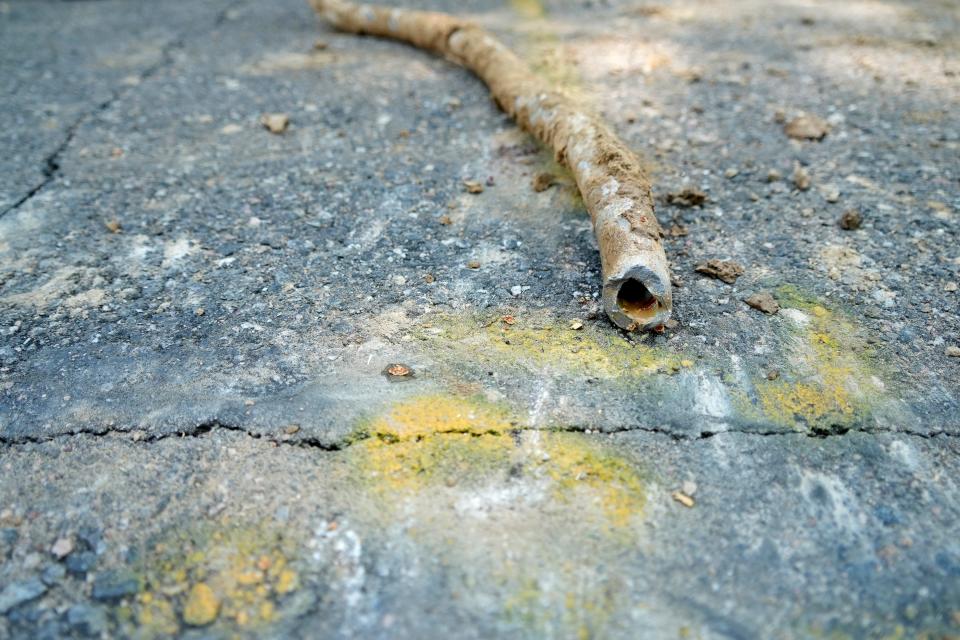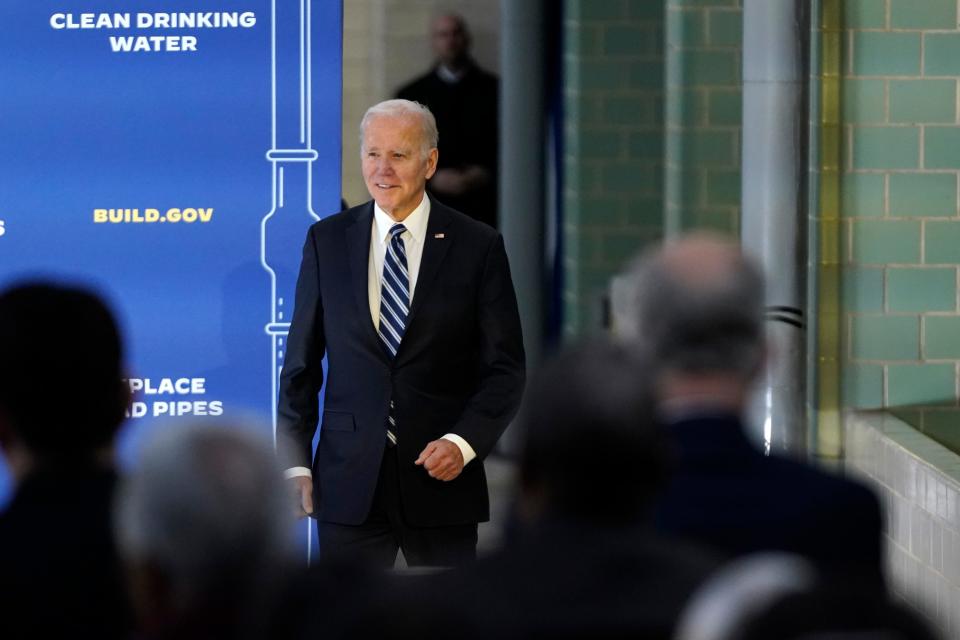Lead water pipes still pose a health risk across America. The EPA wants to remove them all
- Oops!Something went wrong.Please try again later.
Remaining lead water pipes nationwide could be replaced within 10 years in order to prevent public health catastrophes such as the one in Flint, Mich. under a new proposal from the Environmental Protection Agency.
Proposed Thursday, the rule would advance President Joe Biden's years-long goal of removing lead from drinking water by compelling local utilities across the United States to dig up and replace about 9 million aging pipes. The massive undertaking, estimated to cost tens of millions of dollars, is meant protect the public, particularly children, from the hazardous neurotoxin.
Experts have long agreed that people of color and those who live in low-income areas are most at risk of having high lead levels in their blood, causing permanent cognitive damage and other health problems.
“Lead in drinking water is a generational public health issue," EPA Administrator Michael S. Regan said in a statement. “(The) EPA is delivering on our charge to protect all Americans, especially communities of color, that are disproportionately harmed by lead in drinking water systems.”

Stolen vehicles: FBI agent carjacked at gunpoint in Washington D.C. amid city's rise in stolen vehicles
Biden has sought to replace lead pipes across U.S.
The proposal, which would update regulations under the 1991 Safe Drinking Water Act, has been a cornerstone of Biden's efforts to limit lead exposure since he first allocated $15 billion in 2021 to replace lead service lines from coast to coast.
The funding, which comes through the EPA's Drinking Water State Revolving Fund, is among the $50 billion made available through Biden Administration's Bipartisan Infrastructure Law for water infrastructure upgrades.

Another $11.7 billion can also be used for lead service line replacement, according to the EPA, which says it has has awarded more than $3.5 billion to date in funding for lead service line replacement across the country.
“President Biden and Vice President (Kamala) Harris believe that everyone should be able to turn on the tap and know that the glass of water they pour is safe to drink,” White House Council on Environmental Quality Chair Brenda Mallory said in a statement.
The risk posed by lead pipes
Experts warn that no level of lead exposure is safe, no matter how minimal. The neurotoxin can cause irreversible damage to the nervous system and the brain, particularly to infants and children.
Lead exposure in children can severely harm their mental and physical development, while adults can experience increased blood pressure and heart disease, according to the EPA. Adults are also at risk of cancer and decreased kidney function.
Low-income urban areas and communities of color are disproportionately afflicted by exposure to lead from both paint and aging water systems compared to those who live in areas with newer infrastructure.
Nowhere was that disparity more stark than in 2014 in Flint, Mich. when the neurotoxin leached into the city's water supply after the city switched water sources. Amid the lead water crisis, the city also experience an outbreak of Legionnaires' disease and deaths.
But some cities have experienced success already with removing and replacing lead water pipes, including Newark, New Jersey. The city removed all 23,000 of its lead pipes in under three years after prolonged lead water problems, as have Green Bay, Wisc., and Benton Harbor, Mich, said EPA Assistant Administrator for Water Radhika Fox.
"Our proposed rule applies the lessons learned to scale these successes to every corner of the country,” Fox said in a statement.
Flint pediatrician Mona Hanna-Attisha called the EPA's proposal a "game-changer for kids and communities" and said that, if adopted, if will prevent similar crises in other cities.
"I am thrilled that this rule centers our children and their potential - and listens to parents and pediatricians who have been advocating for this for decades," said Hanna-Attisha, Flint, associate dean for Public Health at Michigan State University College of Human Medicine.
Missing Indiana teen: Human remains found on neighbor's property in search for teen missing since June
EPA plans public hearing
The EPA estimates that its proposal could generate as much as tens of billions of dollars in annual economic benefits because there would be less cognitive impairment in children and fewer health disorders.
The proposal would also require local utilities to create inventories of all their lead pipes and provide water filters to households with repeated exposure. Updates to water testing procedures would position authorities to better spot lead contamination that previously would have gone undetected, the EPA said.
The agency said it is accepting public comments on its proposal for 60 days before it is finalized next year. A virtual public hearing is planned for Jan. 16, 2024.
Eric Lagatta covers breaking and trending news for USA TODAY. Reach him at elagatta@gannett.com
This article originally appeared on USA TODAY: Lead water pipes in US to be removed in 10 years under EPA proposal

